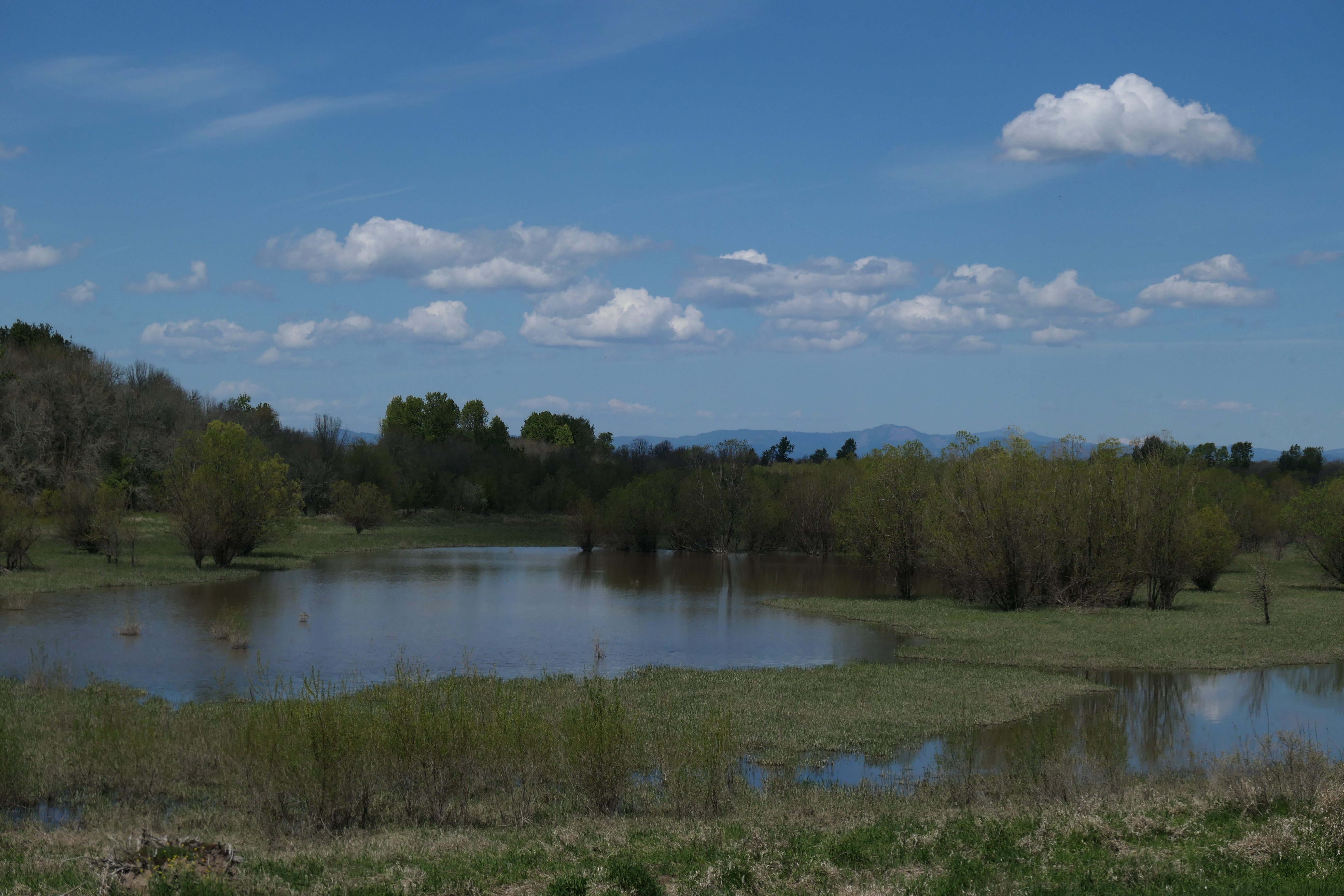It’s been exciting weeks of travel and blurry re-entry and then, towards the end of this week, another successful attempt at anchoring in the place where I always find solace: Sauvie Island.

A portion of the island that is closed off for winter to allow migratory birds to rest and breed, opens at the beginning of May. All is still fresh and the cows think they own the place.


It gives me pure joy to wander along paths I haven’t seen in 6 months and recognize every tree still standing.
The eagle is re-using the old nest, still in position. The rest of the birds are busy building their own.




The forest path is sun-dappled,

the meadows still intensely green,

the oaks in fresh leaf


and small hawthornes in bloom.

And what comes to mind, on a regular basis, is one of Goethe’s poems, the second part familiar to me since I was 5 or 6 years old, that describes the peace trickling down through nature. It is set at night time, but easily converted to my day jaunts as well – a quiet calm descends from the larger realms of our surround to the trees, to the bird population and finally to ourselves, who are still waiting for it.
Here is a version of Wanderer’s Nightsong translated by Longfellow:

Goethe wrote this during a time of grappling with the demands of a new job at the Weimar court during 1776, unhappily in love, and trying to adapt to new-found fame as a writer (his Sorrows of Young Werther had exploded on the literary scene.) He inscribed the second stanza on the walls of a hiking cabin in the nearby mountains – you can actually hike a 20 km trail that links many of Goethe locations including this (rebuilt) hut on the Ilmenau, should you ever visit Thuringia. On my list to do. One of these days.


The trail begins at the “Amtshaus” in the marketplace, where the Ilmenau Information Centre and the Goethe Town Museum are housed. The Museum shows Goethe as a poet, civil servant and naturalist. Along Obertorstrasse, the trail runs to the cemetery first and then continues through the upper Old Quarter on Mittlere and Obere Berggrabenweg. On Schwalbenstein Rock, there is a hut where hikers can take a break. Goethe wrote the 4th act of “Iphigenie” here. Passing the Schöffenhaus, the Goethe Hiking Trail continues across Heidelberg Hill to St Mary’s Spring and the Emmastein Rock. Then it descends to Manebach to the Choirmaster’s House. The trail runs in Manebach through the Ilm Valley and at Kammerberg, the climb to Helenenruhe and the Grosse Hermannstein begins. At a height of 861 metres, the trail reaches the “Goethe Hut”, the highest point on the trail. Descending, hikers come to the Gabelbach Hunting Lodge Museum, which gives an insight into Goethe’s scientific studies of nature. After the Hirtenwiese Meadow, the route continues along the country road to Neustadt down to the picturesque Schorte Valley and Knöpfelstal Pond with a shelter and Finstere Loch with a small waterfall. After 20 minutes, the Goethe Hiking Trail arrives at the “Auerhahn” historic tavern and then leads to another Goethe Museum in Stützerbach.
In the meantime, I savor Sauvie Island, the mountains around us, and the blessings of nature.



Music today are Schubert’s version of both part of the Lied, and then one by Liszt for comparison.







Lee Musgrave
Uhm, someday Heidi and I will need to visit Sauvie Island. What time of year do you feel is the best time to do so?